Walk behind tractors have been a small-farm equipment staple in Europe for decades and are becoming popular in the United States. To learn more, we talked one of the nation's leading experts in walk-behind tractors, Earth Tools' founder, Joel Dufour, about how they work and what types of properties they're best suited for.
Whether you want to become more self-reliant by growing your own food, have ambitious plans for a homestead or you want to have a market garden and take a shot at a second career, a tractor can make the job easier and can save you tons of bodily wear and tear.
But, if you have only a few acres (or only plan to cultivate a few acres), investing in a tractor may seem too costly---in terms of money, time and maintenance.
The great news is there is a robust and affordable option in walk-behind tractors for small acreage.
To get a better understanding of walk-behind tractors and their many applications we talked to founder and owner of Earth Tools in Kentucky, Joel Dufour. He has spent the last 40 years using, selling and repairing a couple of the most sought-after Italian brands of walk-behind tractors in North America and beyond. Earth Tools also sells a wide variety of high quality European hand tools for the farming/market garden industry.
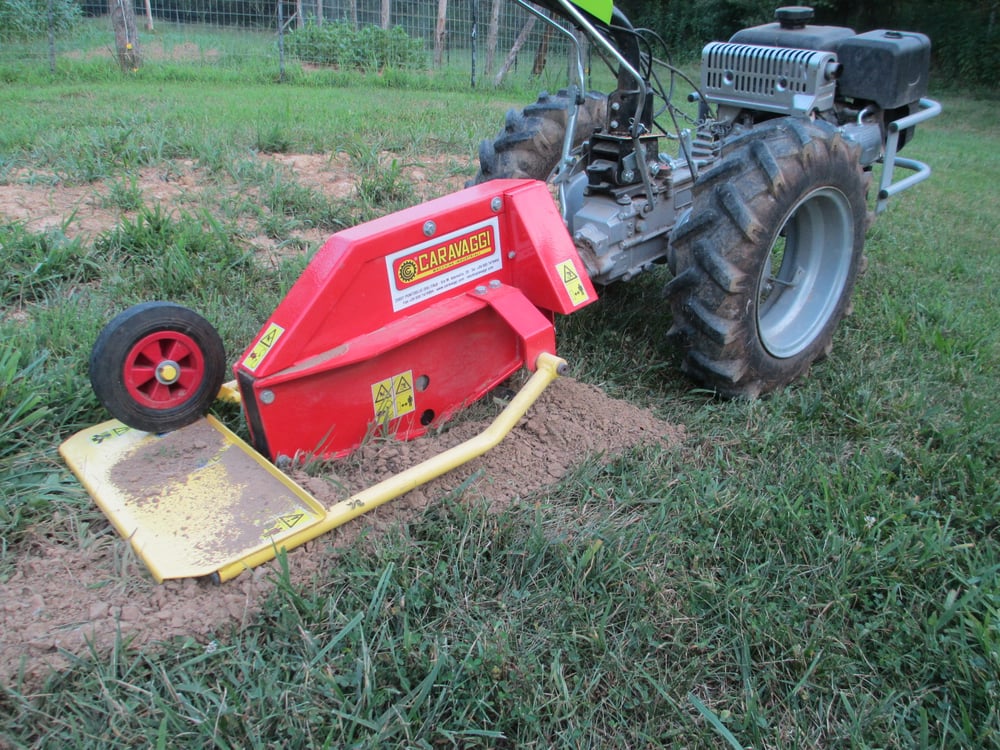
Brief History of Walk-Behind Tractors
The concept of the walk-behind tractors is not a new one. They were quickly adopted in America and Europe after World War II. Then, the walk-behind tractor experienced a downturn in the US.
According to Dufour, “The 1950s was their heyday. After World War II, the USDA changed their focus and said get big or get out. Suburbs began where prime farmland surrounding the cities was and it turned into sprawled out grid style housing. The shift turned to buying your food at the supermarket because it was produced where it is cheaper, rather than grow it yourself or buy at the local market.”
Fortunately, the walk-behind tractor didn’t experience the same downturn in Europe, where the tradition is still going strong today.
“Europeans said we need to restructure [as with America] but in their mind the agricultural system [and scale] didn’t need to change, it only needed to modernize. They said that using a walk-behind tractor is just as good as using hoof-stock to plow your fields, only you would not have to feed it. You only had to work half the time eliminating the need to grow and harvest hay to get your animal through the winter.”
Much of today’s renewed popularity of these tractors is attributed to the locally-grown, slow-food movement. The most notable market gardeners in this space promoting their use is Elliot Coleman, author of the New Organic Grower (1989) and more recently Jean-Martin Fortier, author of The Market Gardener and television personality whom we spoke with a couple years back.
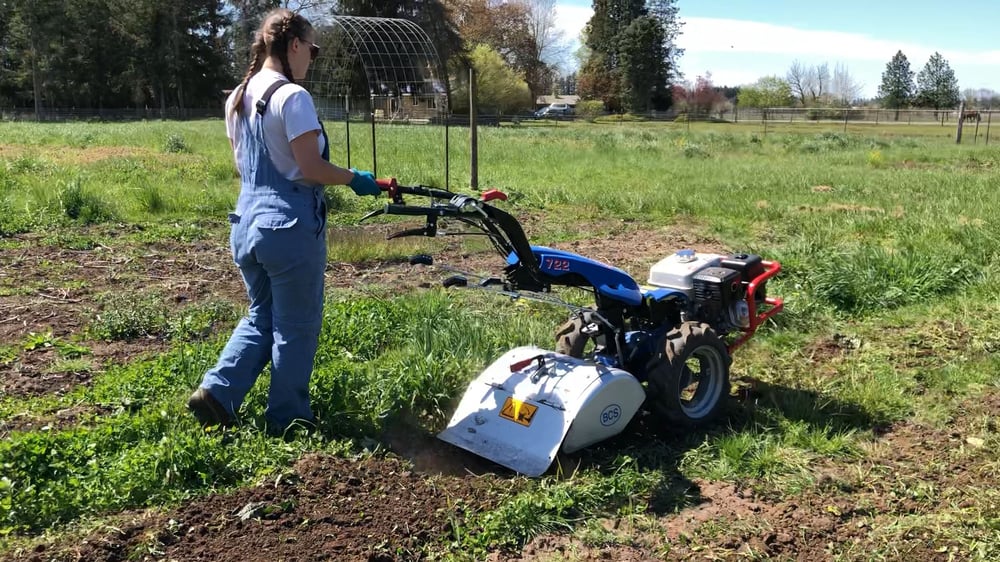
What Makes a Walk-Behind Tractor a Tractor?
Dufour says, “A walk-behind tractor by definition is something that runs different implements, just like a [4-wheel] farm tractor runs different implements. What can a farm tractor do? A farm tractor is 100% useless on its own, it has to have an implement attached to it to make it useful, otherwise you drive it around the field and do nothing. The walk-behind tractor is the same thing; it has to have implements on it to make it useful. It has the same functionality as a full size farm tractor, with the exception of operating a front-loader and a few other tasks.”
There are strengths and weaknesses in comparing a full sized farm tractor to a walk-behind tractor.
One of the primary strengths is there are over 50 implements available, allowing the user to perform all kinds of chores.
“It’s staggering what you can do with a walk-behind tractor from tilling, to mowing to snow removal to baling hay with a hay rake and hay baling package.”
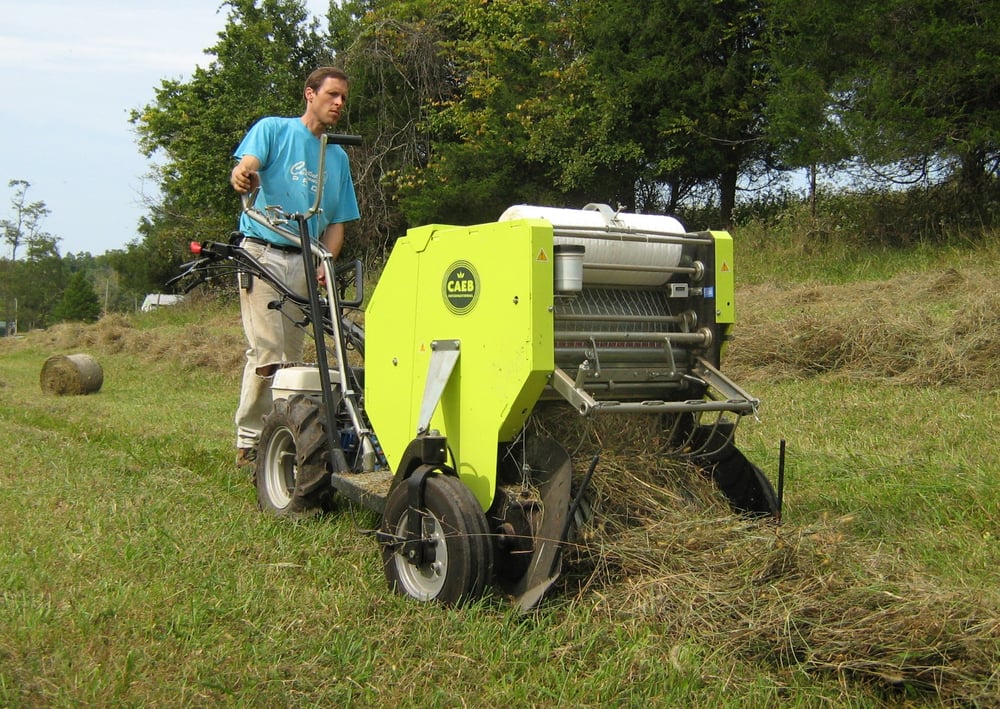
He goes on to say, “The beauty of a walk-behind tractor is that it is a small compact power unit that has ONE engine. If you are on a rural piece of property, you have different things that need doing. If you are going to garden, you need a tiller or soil working device. If you want to maintain the land in something other than a wild primal state, you need some kind of mower or bush hog, a chipper to clean up branches, a sickle bar if you’re going to do hay. And you’re going to have a need to transport material around like hauling rocks, wood or compost. Doing these tasks with traditional lawn & garden equipment means having a separate engine for EACH piece of equipment.”
The main weakness, if you want to call it that, of a walk-behind tractor relates to the scale of the land you need to be worked. Dufour notes that the best scale for a walk-behind tractor is up to about 2 acres for soil-working, but can be up to 15 acres for applications such as hay harvesting.
Another huge benefit is they use very little fuel and are very efficient.
Dufour says, “You are using the fuel to do the work of the implement and not much more. Where full size tractors get you is that you are moving the full weight of the tractor around, so you are moving a lot of steel around the field in order to mow or till. If you have slopes you use even more fuel.
“Walk behind tractors are so light that it is almost an implement with an engine on it. When you strip it down to the handlebars and engine it is only about 100 pounds, so it takes almost no energy to move it around. We know from experience that 90 to 95% of the engine energy is going into the implement and not the wheels, whereas with a farm tractor, a much larger percentage of power goes to moving itself around.”

What Acreage Limit/Scale is a Walk-Behind Tractor Best Suited for?
Wondering if your property is suited for a walk-behind tractor? Per Dufour, at best these tractors travel about 3 mph with a mowing attachment, and cutting widths vary by mower type, sickle bars being the widest at up to 6 feet. So, if you have a significant amount of acreage, you can do the math and figure out it will take a long time (1/2 acre to 1 acre per hour, depending on mower type).
But the benefits these units can provide for small acreage are hard to debate.
At the beginning of Jean-Martin Fortier’s farming career, he worked with Joel’s company Earth Tools because they offered the largest selection of walking tractors and farming implements for walking tractors in North America, namely the Italian made BCS and Grillo tractor brands plus a host of compatible implements.
“The biggest market segment they sell into is market farmers [gardeners]. I worked with Jean-Martin Fortier back in 2008 and his whole thing was if you are doing an acre and a half you don’t need anything else but a walk-behind tractor, which is absolutely true. Anything in that range up to about 2 to 2.5 acres. You get over that and you get into a stretch because of the time it takes to do the necessary tasks. A larger tractor will work the land more quickly on a larger scale.”
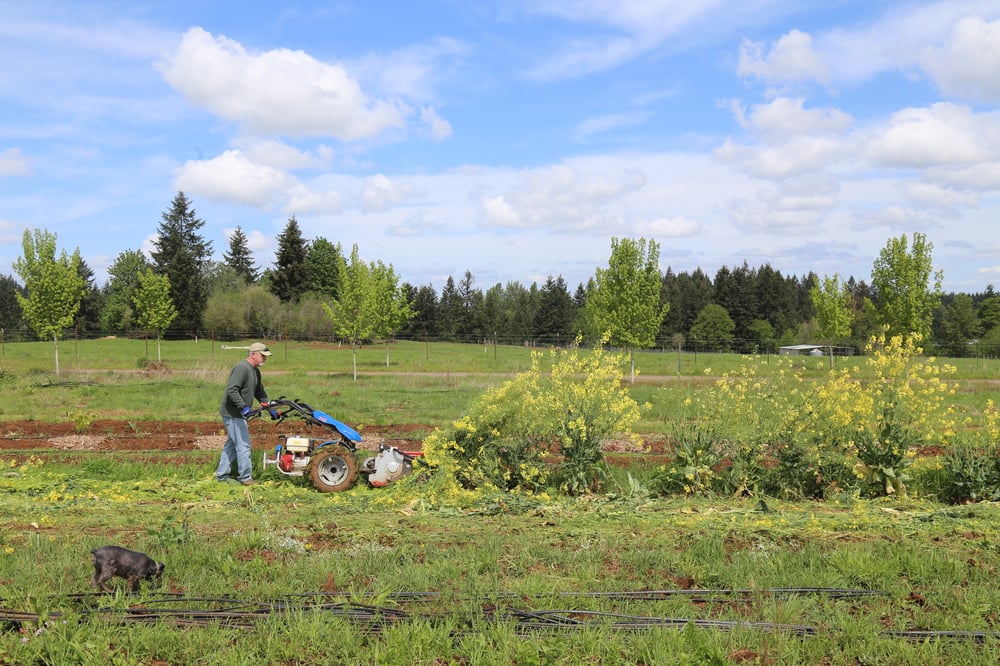
How Easy are They to Run?
Depending on the model, engine size and implement being used these tractors can weigh anywhere between 250 to 450 pounds. Working a machine like this can be intimidating, but it’s not difficult to learn and master.
Dufour says, “The learning curve isn’t too steep if a person has any mechanical experience at all. We have lots of single women farmers using them, which says a lot. Women aren’t as large as men, but they can still handle these machines. They can handle the big ones that are 13 horsepower models and they are running small farms with them.”
He goes on, “The steep part of the learning curve is to use the leverage and physics of the machine to help them do the work and help them change the implements.”
In this context, Dufour highlighted the primary benefit of the reversible handlebars.
"It is the one thing that differentiates the Italian walk-behind tractors (like BCS and Grillo) from any other. You can turn the handlebars in a matter of seconds to give you a power take off (PTO) on the front. This gives the flexibility to attach implements on both front and back, and it is key to understand how to operate it properly."
“A walking tractor is a fulcrum. It’s a single axle, so the way it is balanced with the implement on one end and the implement on the other is important. You need to achieve the right balance to make the implement use as easy as possible,” says Dufour.
There are many videos online that demonstrate its operation. Dufour’s company Earth Tools has many instruction videos from maintenance to implement operation here.
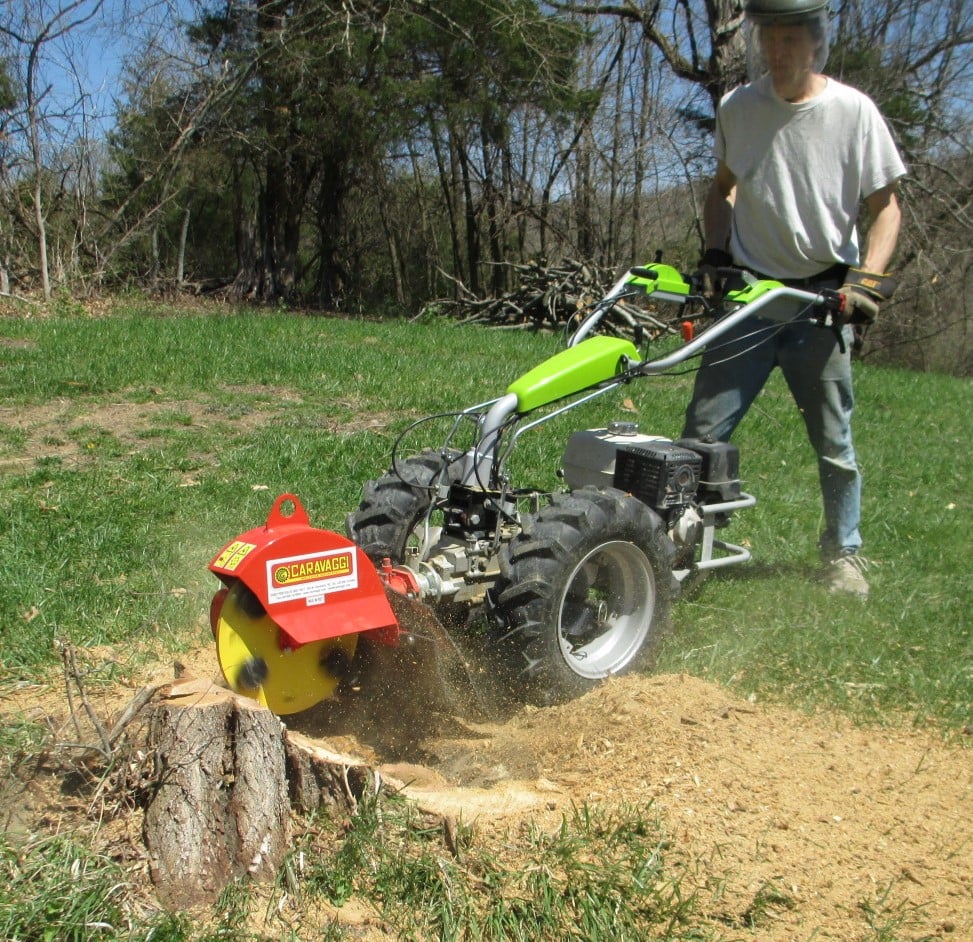
What About Maintenance?
With the 50+ implements that can be attached to these tractors, one might assume there is a lot that can break down, but this isn’t the case.
“They appealed to me as an extremely practical machine, highly efficient and something to be proud of in terms of representing a quality product. So much of the small-scale lawn and garden equipment is meant to be disposable and that didn’t appeal to me as an environmentalist. The more a product can be used and the longer the service life can be on a manufactured product, the better it is for everyone.”
In many instances Dufour has serviced machines that were bought in the 1970s.
“There are people that have bought from my dad (who owned the business prior to Joel turning it into Earth Tools) back in the 70’s and the original owner might be dead, but it has been passed down to some family members and they call me for parts because the machine still works.
“Because these are so well built, they last a long time and they can be serviced, even after years. Parts are still available and Earth Tools is willing to work with anyone.”
Part of what makes these so reliable is how they are built.
Dufour concludes, “The equipment compared to the 70s is still similar with a few more modern upgrades, but by and large all the gear drive tractors are still what they were 40 years ago. They are rugged bulletproof machines that can be passed down generations.”
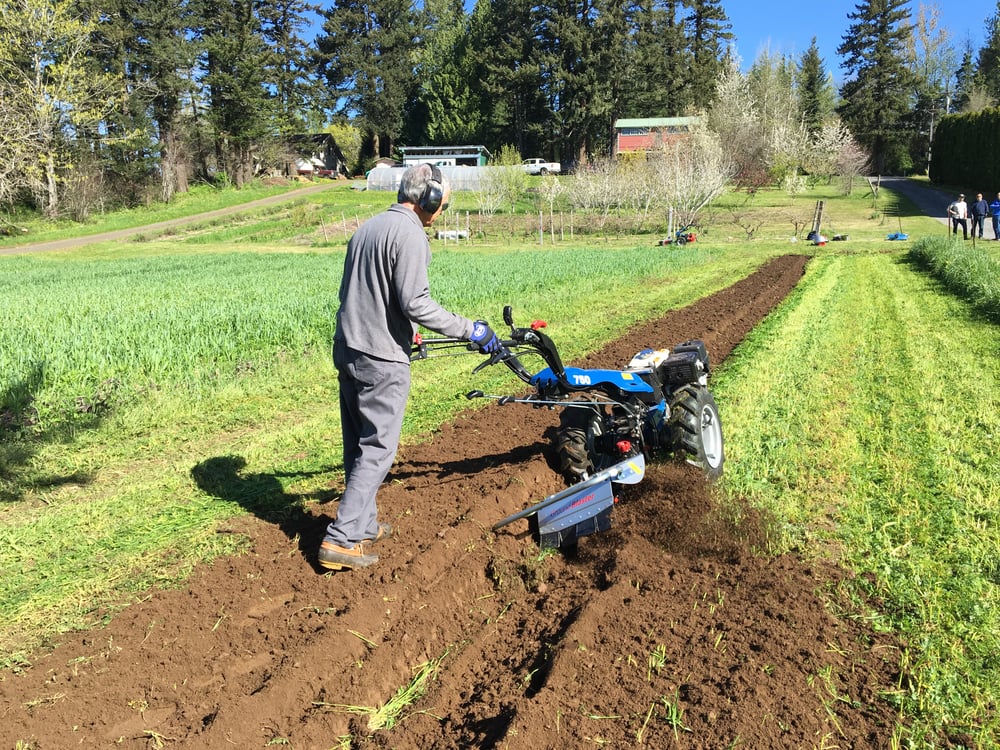
How Much Does a Walk-Behind Tractor Cost?
In short, when you compare these tractors to larger riding tractors, they are a fraction of the price.
“Range of costs for the initial tractor is $2,000 to $6,000, depending on model. The bulk of the 50+implements available are in the $800 to $2,000 range, although you have large implements like the hay-baler that get close to $10,000.”
These prices are the cost of a new machine. The used market for these machines is also a great place to look if you are shopping on a budget.
One of the topics that kept coming up in this conversation is the machine’s reliability, durability and serviceability. So if you are shopping the used market and find one, even if its 40 years old, chances are you can get parts and fix it up. This is where Earth Tools can help. Dufour and his team help trouble shoot issues, order parts and walk you through repairs. “We believe in helping and will work with anyone.”
You can also find postings for used walk-behind tractors and implements on their company bulletin board here.
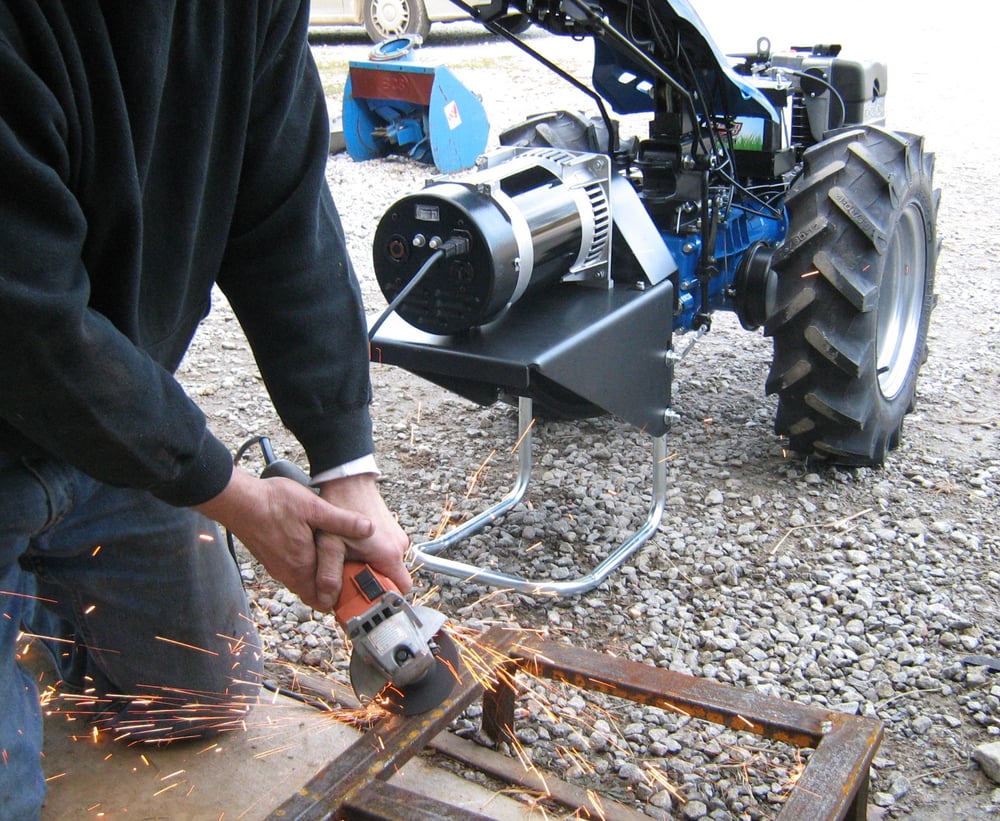
Is a Walk Behind Tractor Right For Your Rural Land?
It all depends on your context. That is the size of your property, the amount you want to work/cultivate and what other tractor-related tasks you need done on your small acreage. The list of benefits for small acreage stacks up quickly. Even if you have one and upgrade to a riding tractor later, the walk-behind will still perform many tasks in smaller spaces that the riding tractor can’t handle.
There are a wide variety of brands and models within those brands, so it is best to speak with someone experienced with these machines.
If you would like to learn more about Earth Tools, you can contact them here. Or to find a dealer near you of the popular BCS brand, you can search by zip code at BCS America here.


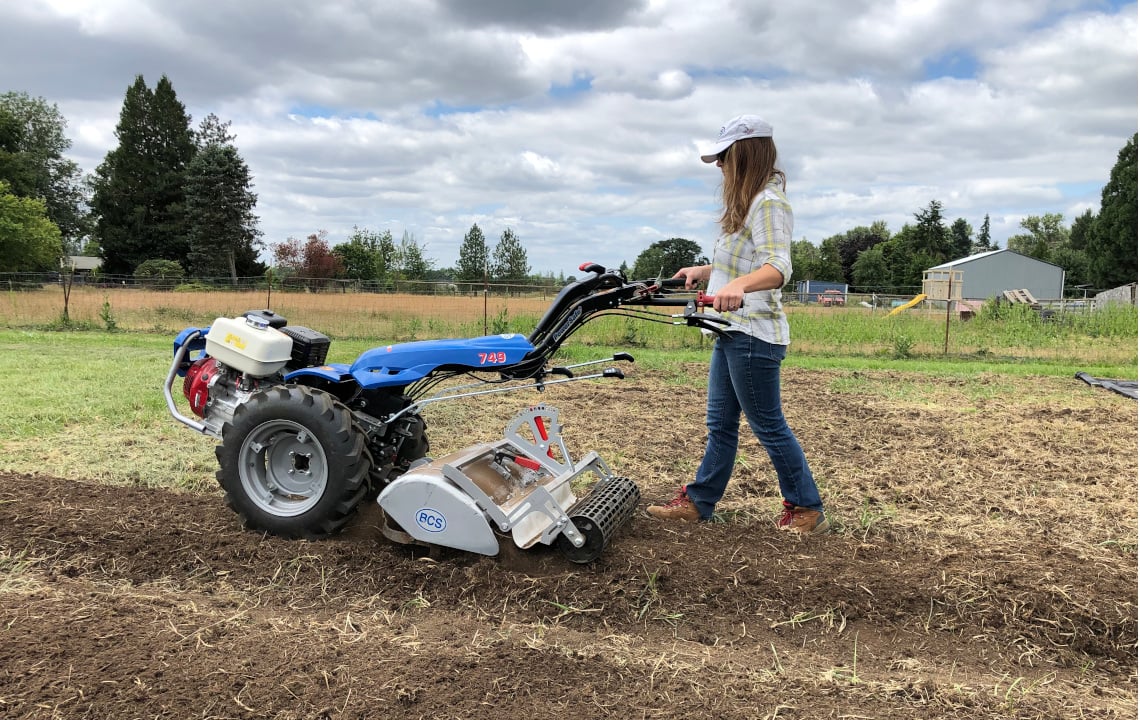

-1.jpg)




















